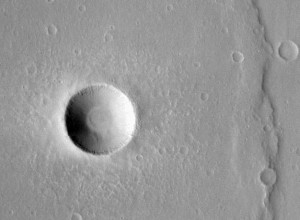Frequently when looking at photos of lunar or Martian landscapes, I see craters as blisters. This can usually be rectified by turning the picture upside down; then craters reveal themselves as indentations rather than bulges. Do I need spectacles?

THEMIS
No; this common illusion is all in the brain. Whether you see hills and valleys correctly or as their opposites depends on which direction you imagine the sunlight is coming from. If you get it wrong, every upslope looks like a downslope and vice versa.
Years ago, Netherlands astronomer Marcel Minnaert did an experiment. He showed people Moon photos like the one below and recorded more than 400 reactions. When the photos were oriented so the light came from the top or left, nearly three-quarters of the people correctly saw the craters as dents.
When the photos were oriented so the sunlight was coming from below or the right, only half saw them correctly (S&T: February 1967, page 90). Apparently, the brain tends to assume that light comes from above or the left.
— Alan M. MacRobert
 1
1
Comments
allan christ
February 8, 2018 at 3:56 am
why are the crators on the moon all the same depth yet different in size ,, this should not be possible, yet look at any picture taken of the moon.
You must be logged in to post a comment.
You must be logged in to post a comment.